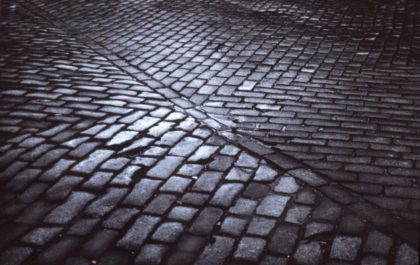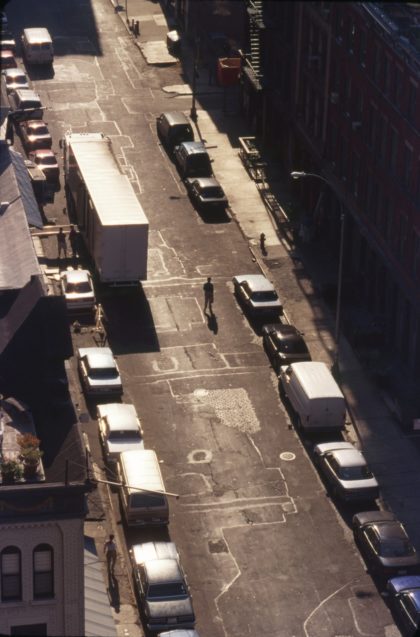The stone streets of 40 years ago
Because of the recent cobblestone discussions, Anna Mogyorósy sent these amazing photos she shot around the neighborhood in the ’80s and ’90s. (She added that she no longer walks on them because she fell getting out of a cab on Jay.)
And I would have dedicated an entire post to that goat, but the other photos give some perspective on the evolution of our stone streets.
- The goat was parked in front of Walker’s around 1983.
- The stone pattern at Greenwich and Beach looking north in 1981.
- A birds-eye view of Harrison from Greenwich to Hudson in 1994 — where there were even more asphalt repairs than now.
















Here’s N. Moore Street west of Varick Street in 1930: https://nycma.lunaimaging.com/luna/servlet/s/u0cz71
Opposite view, same day: https://nycma.lunaimaging.com/luna/servlet/s/c9v671
Nearby repairs, 3 months later: https://nycma.lunaimaging.com/luna/servlet/s/rzc19n
Thanks, James!
This is all marvellous! Brava and bravo for sharing these images, Anna, James and Pam.
And thank you, magic goat, for your service.
Like many of you, I’ve previously lived in cities even older than New York and while any metropolis is always a work-in-progress, some seem to do far better at honouring their history by employing time-honoured tools and techniques to help maintain it. For example, in London, a 2,000 year-old city, they seem to have passed down and, where appropriate, utilised that knowledge to maintain older architecture, streets and the like.
Is it possible that what the TriBeCa streets need is a team more suitably knowledgeable about the installation, maintenance and restoration of high-traffic Belgium Block? As previous commenters have noted, many populous cities with crowded thoroughfares (Paris, Antwerp, Lisbon, Rome, etc.) have done nicely with them, and with cobblestones, for a good long while and when installed and maintained properly they’ve a much longer lifespan than asphalt anyhow.
It’s wonderful to see the excitement for the cobblestone. The photo of the goat is magnificent.
I was inspired to share some of my own memories which you can see here: https://visura.co/donnaferrato/stories/tribeca-cobblestone